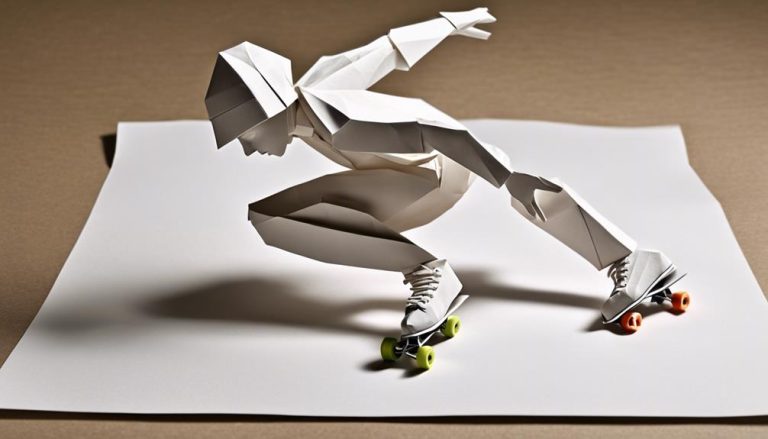General Rules of Mountainboarding
When it comes to hitting the slopes on your mountainboard, it's critical to follow a set of guidelines that guarantee both your safety and the enjoyment of others around you. From the proper safety gear to understanding the unspoken rules of the trails, there are key aspects to ponder before you start on your mountainboarding adventure. So, before you take that first thrilling ride down the mountain, make sure you've got these essential rules in mind to make the most out of your experience.
Safety Gear Requirements
When mountainboarding, you must make certain that you wear the necessary safety gear to protect yourself from potential injuries. The most essential piece of safety equipment you should never ride without is a helmet. A helmet will safeguard your head in case of falls or collisions. Make sure that your helmet fits properly and is certified for use in mountainboarding.
In addition to a helmet, padding is vital for protecting your body from impacts. Elbow pads, knee pads, and wrist guards can prevent serious injuries during falls. It is recommended to invest in high-quality padding that offers both comfort and maximum protection. Remember, safety should always be a priority when hitting the mountainboarding trails.
When it comes to gear maintenance, regularly inspecting your equipment is key to ensuring a safe riding experience. Check your helmet for any cracks or damage before each ride, and replace it if necessary. Inspect your padding for signs of wear and tear, and replace any worn-out pieces promptly. Proper gear maintenance not only prolongs the life of your equipment but also keeps you safe on the mountainboarding track.
Trail Etiquette
To guarantee a pleasant and safe mountainboarding experience, it is essential to understand and follow proper trail etiquette. Here are some key points to keep in mind:
- Proper Signaling: When mountainboarding, communication is key. Use clear and effective signals to alert others of your intentions. Whether you're stopping, turning, or changing direction, make sure to signal in advance to avoid collisions and guarantee everyone's safety on the trail.
- Passing Etiquette: Respect other riders on the trail by following proper passing etiquette. Always announce your intention to pass, whether by calling out or using hand signals. Wait for a safe opportunity to overtake, and pass on the left whenever possible. Remember, patience and courtesy go a long way in maintaining a harmonious mountainboarding environment.
- Trail Cleanup and Group Dynamics: Leave no trace behind. Be mindful of the environment and pick up any trash or debris you may come across. Additionally, when riding in a group, stay together and look out for one another. Keep a reasonable distance between riders, especially on challenging terrains, and support each other throughout the journey.
Terrain Awareness
Developing a keen awareness of the terrain is essential for a safe and enjoyable mountainboarding experience. Trail exploration and obstacle avoidance are critical aspects of terrain awareness. Before starting on a mountainboarding adventure, it is important to conduct a thorough terrain analysis and slope assessment.
When exploring trails, always be on the lookout for potential obstacles such as rocks, roots, or sudden changes in terrain. Keeping a keen eye on the path ahead will help you anticipate and react to any challenges that may arise. By staying alert and scanning the terrain continuously, you can adjust your speed and technique to maneuver around obstacles safely.
Terrain analysis involves understanding the layout of the land you will be riding on. Take note of any steep slopes, sharp turns, or areas with loose gravel that may affect your ride. By familiarizing yourself with the terrain, you can plan your route more effectively and avoid unexpected surprises.
Slope evaluation is another critical component of terrain awareness. Understanding the steepness of a slope will help you determine the level of difficulty and adjust your riding technique accordingly. Remember to approach downhill slopes with caution and maintain control of your speed to prevent accidents.
Weather Considerations
Before you hit the mountainboarding trails, it's important to contemplate the weather conditions. Safety in rain, wind speed precautions, and sun exposure protection are key points to keep in mind. Being aware of these factors will help you have a smooth and enjoyable mountainboarding experience.
Safety in Rain
When riding a mountainboard in the rain, it's important to adapt your safety measures to the wet conditions to make sure a secure and enjoyable experience. Here are some tips to help you stay safe while mountainboarding in the rain:
- Wet conditions, precautions: Be aware of slippery surfaces and reduced visibility. Take turns more slowly and maintain a safe distance from other riders.
- Rain gear, essentials: Invest in quality waterproof gear such as jackets, pants, and gloves. Wear appropriate footwear with good grip to prevent slipping.
- Stay alert: Pay attention to changing weather conditions and be prepared to adjust your riding style accordingly. Consider taking breaks if the rain becomes too heavy to maintain visibility.
Wind Speed Precautions
To secure your safety while mountainboarding, it is essential to take wind speed precautions as part of your weather considerations. When facing windy conditions, be aware of the wind speed limitations for mountainboarding. Strong gusts can affect your balance and control on the board. Make necessary gear adjustments by wearing a more aerodynamic helmet and tightening straps to prevent wind drag. On windy days, consider adjusting your riding techniques by crouching lower to the board to reduce wind resistance. Utilize windy day strategies such as riding in a more compact stance to maintain stability. By being mindful of wind speed and making these adjustments, you can enhance your mountainboarding experience and stay safe in challenging weather conditions.
Sun Exposure Protection
Considering the potential risks of prolonged exposure to the sun while mountainboarding, it is important to prioritize sun protection measures to safeguard your skin health and overall well-being. To make sure you stay safe under the sun, follow these essential tips:
- Sunscreen Application: Apply a broad-spectrum sunscreen with an SPF of 30 or higher before hitting the mountainboarding trails to protect your skin from harmful UV rays.
- Hat Wearing: Wear a hat with a wide brim to shield your face, neck, and ears from direct sunlight, reducing the risk of sunburn and heat-related illnesses.
- Shade Seeking, Hydration Awareness: Take breaks in shaded areas to give your skin a rest from the sun, and remember to stay hydrated by drinking plenty of water throughout your mountainboarding session.
Skill Level Progression
As you progress in mountainboarding, you'll start with an overview of beginner techniques, move on to breaking down intermediate tricks, and eventually face advanced level challenges. These points will guide you through the various stages of skill development, helping you enhance your abilities and conquer more difficult terrain. Embrace each level with determination and practice to become a well-rounded mountainboarder.
Beginner Techniques Overview
When starting out in mountainboarding, it is essential to focus on mastering the foundational skills before progressing to more advanced techniques. To begin your mountainboarding journey, pay close attention to the following:
- Basic Balance: Establish a stable and centered stance on the board, distributing your weight evenly between both feet.
- Body Positioning: Keep your knees slightly bent and your back straight to maintain control and stability while riding.
- Foot Placement: Position your front foot facing forward and your back foot perpendicular to the board for best control and maneuverability.
Intermediate Tricks Breakdown
Interested in taking your mountainboarding skills to the next level? As you progress from beginner to intermediate, mastering jump techniques and landing tricks will be key. Start by perfecting your ollies and nollies to add more height to your jumps. Focus on techniques like straight airs and grabs to enhance your style. Experiment with spin rotations to add flair to your jumps—try 180s and 360s. Practice different grabbing variations to make your tricks stand out. As you become more comfortable in the air, work on smooth landings by bending your knees upon impact. Remember, safety first—always wear your protective gear and start with smaller jumps before attempting bigger tricks.
Advanced Level Challenges
To advance your mountainboarding skills to the next level, focus on mastering complex maneuvers and tackling challenging terrains. Here are some tips to help you conquer advanced level challenges:
- Technical Maneuvers: Practice technical tricks like 360 spins, grabs, and flips to enhance your skills and add flair to your riding style.
- Competition Strategies: Study your opponents, understand the judging criteria, and strategize your runs to showcase your strengths and maximize your scoring potential.
- Terrain Mastery: Push your limits by riding on steep slopes, rocky paths, and varied terrains to improve your adaptability and become a well-rounded mountainboarder.
Emergency Preparedness
In case of an emergency while mountainboarding, always be prepared with essential safety gear and a clear plan of action. First aid is important when engaging in extreme sports like mountainboarding. Make sure to carry a basic first aid kit that includes items like bandages, antiseptic wipes, and pain relievers. It's important to know how to use these items in case of minor injuries like cuts, scrapes, or bruises.
Additionally, having emergency contacts readily available is important. Before heading out for a mountainboarding session, make sure that someone trustworthy knows your whereabouts and when to expect you back. This person should also be informed about any pre-existing medical conditions or allergies you may have. In case of a more severe emergency, having these contacts can expedite getting you the help you need.
Frequently Asked Questions
What Are the Best Types of Shoes to Wear While Mountainboarding?
When mountainboarding, your feet are the tires of your adventure vehicle. For best performance, choose shoes with excellent grip and durability for stability, combined with flexibility and protection for comfort and safety.
Is Mountainboarding Suitable for All Ages, or Is There a Minimum Age Requirement?
Mountainboarding can be enjoyed by all ages, but there is usually a minimum age requirement for safety reasons. Make sure you follow the necessary precautions and gear up properly before hitting the trails.
Can Mountainboarding Be Done in All Types of Weather Conditions, or Are There Limitations?
You can mountainboard in various weather conditions, but there are limitations. Mountainboarding in rain and snow can be challenging and risky. Safety precautions are essential. Make sure you have the right gear essentials for different conditions to stay safe.
Are There Any Specific Rules or Regulations Regarding Where Mountainboarding Can Be Done?
When it comes to mountainboarding locations, it is crucial to follow safety guidelines and respect any regulations in place. Always check for specific rules about where you can ride to guarantee a fun and safe experience.
How Often Should Mountainboard Maintenance Be Performed to Ensure Safety and Performance?
To guarantee mountainboard safety and performance, regular maintenance should be scheduled. Treat your mountainboard like a prized possession. Check bolts, tire pressure, and bearings monthly. Clean and lubricate components to glide smoothly and safely.






